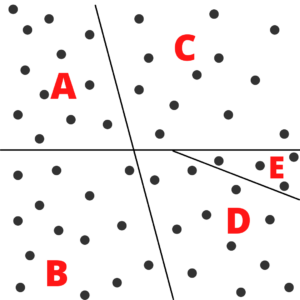Navigating Fertilizer Prices Part 1: Taking a Soil Sample
go.ncsu.edu/readext?850925
en Español / em Português
El inglés es el idioma de control de esta página. En la medida en que haya algún conflicto entre la traducción al inglés y la traducción, el inglés prevalece.
Al hacer clic en el enlace de traducción se activa un servicio de traducción gratuito para convertir la página al español. Al igual que con cualquier traducción por Internet, la conversión no es sensible al contexto y puede que no traduzca el texto en su significado original. NC State Extension no garantiza la exactitud del texto traducido. Por favor, tenga en cuenta que algunas aplicaciones y/o servicios pueden no funcionar como se espera cuando se traducen.
Português
Inglês é o idioma de controle desta página. Na medida que haja algum conflito entre o texto original em Inglês e a tradução, o Inglês prevalece.
Ao clicar no link de tradução, um serviço gratuito de tradução será ativado para converter a página para o Português. Como em qualquer tradução pela internet, a conversão não é sensivel ao contexto e pode não ocorrer a tradução para o significado orginal. O serviço de Extensão da Carolina do Norte (NC State Extension) não garante a exatidão do texto traduzido. Por favor, observe que algumas funções ou serviços podem não funcionar como esperado após a tradução.
English
English is the controlling language of this page. To the extent there is any conflict between the English text and the translation, English controls.
Clicking on the translation link activates a free translation service to convert the page to Spanish. As with any Internet translation, the conversion is not context-sensitive and may not translate the text to its original meaning. NC State Extension does not guarantee the accuracy of the translated text. Please note that some applications and/or services may not function as expected when translated.
Collapse ▲As with humans, plants must receive appropriate nutrients to grow. Most cattle, sheep, or goat operations rely heavily, if not completely, on forage production for feed. As fertilizer prices continue to climb, with urea (nitrogen), diammonium phosphate (phosphorus), and potash (potassium) prices nearly doubling since September 2020, now is the time to adopt new or different management practices.
The best and easiest place to start when navigating this issue is taking a soil test. Soil testing at the NC Department of Agriculture and Consumer Services Agronomic Lab is $4/sample now through April. Samples submitted between April and Thanksgiving are free. Soil testing boxes and forms are available for free at the Cooperative Extension office in Danbury. The form can also be downloaded online. We also have a soil probe, which is used to make soil sampling easier. The recommended depth for soil sampling in pastures and hayfields is 4-6 inches. One representative sample should be submitted for each management zone. For example, consider the pasture layout below.
There are 5 pastures or hayfields in this example (A, B, C, D, and E). Each pasture is considered a management zone, so a total of 5 boxes would be submitted. The sample for each pasture is collected by taking a group of samples, or cores, from the pasture, which is represented by the dots on the map. Notice that cores are collected evenly throughout each area, and not in one corner or in a straight line. Collecting them randomly and throughout the entire area ensures that results are representative of the entire pasture or hayfield, instead of one corner or strip. As cores are collected in the pasture, they are placed in a clean, plastic bucket. After all cores are collected for pasture A, the soil will be mixed in the bucket. The mixed soil will be used to fill the sample box for pasture A, and the excess is discarded. This ensures that recommendations based on the sample are correct for the entire management area. The same steps are repeated for pastures B, C, D, and E.
The submission form for the example layout is linked below. In pasture or hayfield situations, the crop codes 055 or 054 are crop codes that will provide the most accurate amendment recommendations. Crop code 055 (tall fescue/orchardgrass/timothy, maintenance) should be used when the purpose of the sample is to improve or maintain existing pasture. Crop code 054 (tall fescue/orchardgrass/timothy, establishment) should be used when new pasture/hayfield is being newly established or planted. If you are not sure which crop code to use, listing both is the best option.
Samples should be addressed according to how they are mailed (there is a separate address for UPS/Fedex and USPS). The Extension office does not accept or mail samples.
Example Sample Submission Form
Click here for Part 2: Interpreting Soil Test Results and Choosing Amendments





